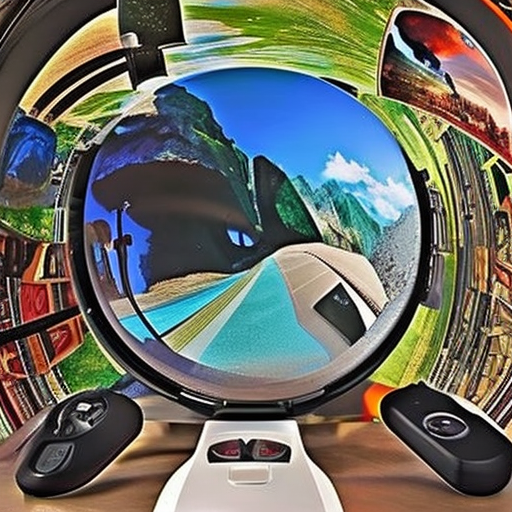Summary: 360-degree videos are immersive videos that allow viewers to experience a 360-degree view of the recorded scene. They are created using specialized cameras that capture footage from all angles simultaneously. These videos are becoming increasingly popular in various industries, including entertainment, tourism, and education, as they provide a unique and interactive viewing experience.
What are 360-degree Videos?
360-degree videos, also known as immersive videos or spherical videos, are a type of video format that allows viewers to experience a 360-degree view of the recorded scene. Unlike traditional videos that are shot from a fixed perspective, 360-degree videos capture footage from all angles simultaneously. This creates an immersive experience where viewers can explore the video by panning, tilting, or rotating their viewpoint.
How are 360-degree Videos Created?
360-degree videos are created using specialized cameras that have multiple lenses or cameras positioned in a spherical arrangement. These cameras capture footage from all angles simultaneously, which is then stitched together using software to create a seamless 360-degree video. The resulting video can be viewed on various platforms, including websites, social media, and virtual reality (VR) headsets.
Applications of 360-degree Videos
360-degree videos have a wide range of applications across various industries. In the entertainment industry, they are used to create immersive experiences in movies, music videos, and virtual reality games. Viewers can feel like they are part of the action, enhancing their engagement and enjoyment.
In the tourism industry, 360-degree videos are used to showcase destinations and attractions. They allow potential travelers to virtually explore a location and get a sense of its atmosphere and surroundings. This can help in making travel decisions and promoting tourism.
360-degree videos also have educational applications. They can be used to create virtual tours of museums, historical sites, and educational institutions. Students can explore these environments and gain a deeper understanding of the subject matter.
Advantages and Challenges
One of the main advantages of 360-degree videos is their immersive nature. They provide a more engaging and interactive viewing experience compared to traditional videos. Viewers can control their perspective and explore the video at their own pace, creating a sense of presence and involvement.
However, creating high-quality 360-degree videos can be challenging. The specialized cameras required for capturing 360-degree footage can be expensive and complex to operate. Additionally, the stitching process to combine the footage from multiple cameras can be time-consuming and require powerful hardware. Furthermore, the large file sizes of 360-degree videos can pose challenges for streaming and storage.
The Future of 360-degree Videos
As technology continues to advance, the popularity and accessibility of 360-degree videos are expected to grow. The increasing availability of affordable 360-degree cameras and the development of user-friendly software for editing and sharing 360-degree videos are making it easier for content creators to produce immersive videos.
Moreover, the rise of virtual reality (VR) technology is also contributing to the growth of 360-degree videos. VR headsets allow viewers to experience 360-degree videos in a more immersive and realistic way. This has opened up new possibilities for entertainment, gaming, and virtual tourism.
In conclusion, 360-degree videos offer a unique and immersive viewing experience that is gaining popularity in various industries. They are created using specialized cameras and software to capture and stitch together footage from all angles. With applications in entertainment, tourism, and education, 360-degree videos are expected to continue evolving and shaping the way we consume visual content.












